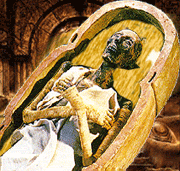In many places, large carnaval parades are held with large floats, organized and created by the carnaval associations. The parades have usual a particular theme whereby authorities are ridiculed, events of the past year are represented and which are often politically incorrect and used to make people think outside the box or function as a mirror to the society. Also groups or individuals on foot will participate and fill the gaps between the carnaval wagons during the parade. Fanfares and marching bands will provide for typical carnaval music. The floats are build by carnaval associations, but also often by independent groups of friends, families, neighbourhoods or other clubs. A massive ship-looking wagon is shown in every carnaval parade which is manned by the prince, his entourage and the council of eleven of the city it is held or of the carnaval association that organized the parade and is usually the last float at the parade. Carnaval parades often start at 11.11 am and end early in the afternoon. Some wil start in the afternoon to give participants the opportunity to join several parades a day and to give the public and participants the opportunity to be somewhat more sober / less hangover after the drinking of the day before. Usually a competition will be held to choose the most outstanding contribution to the parade with separate categories for floats, groups on foot and individual participants. Although a procession usually takes from a starting point to a point of arrival, it actually roams from nowhere to nowhere. What only matters is the social binding during the parade. Along the route, the crowd forms a very essential part of the parade. The crowd is not just spectator, they form living dikes along the carnaval river without which the parade would loose meaning

















































